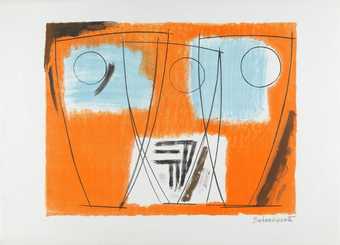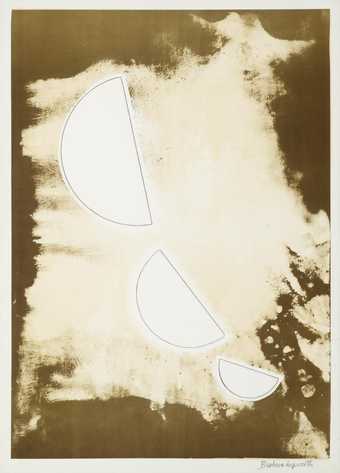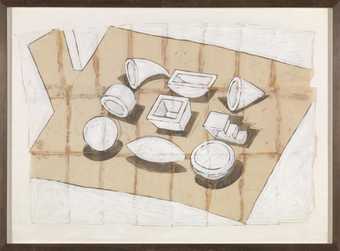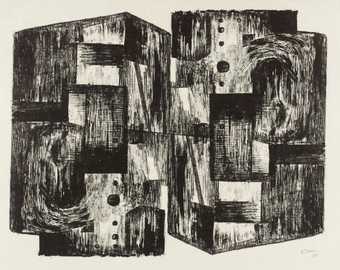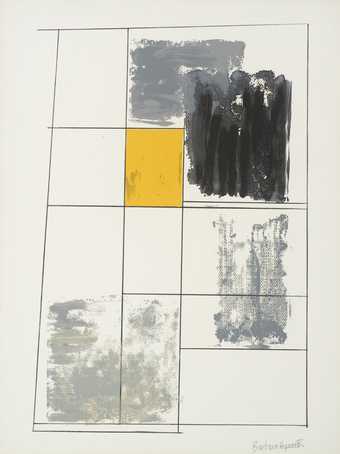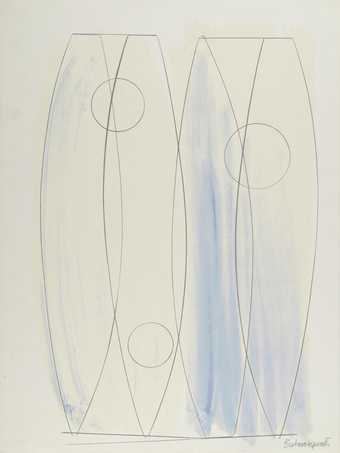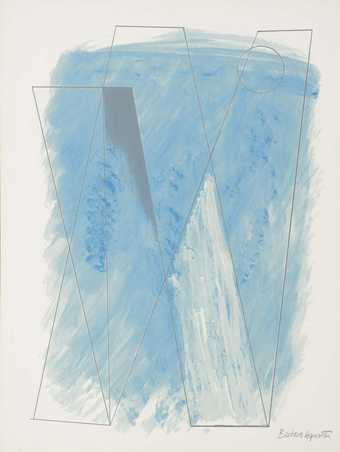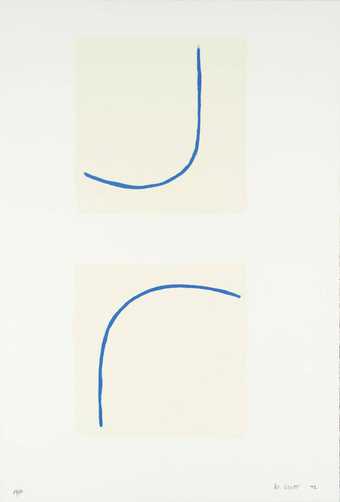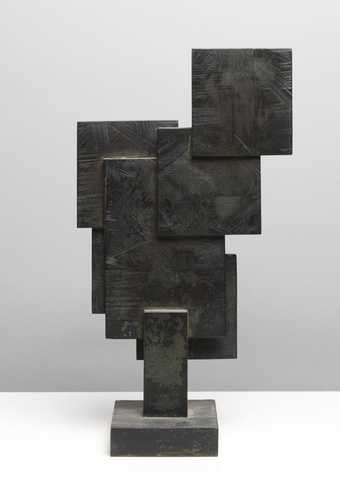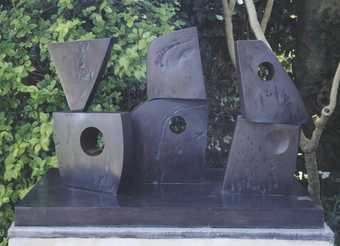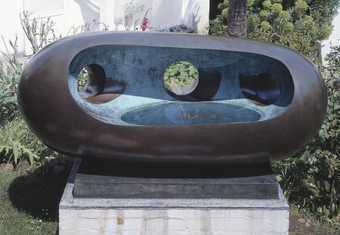
Not on display
- Artist
- Edward Allington 1951–2017
- Medium
- Plaster
- Dimensions
- As displayed: 490 × 2640 × 3555 mm (approx)
Total weight of all 9 forms: 278 kg - Collection
- Tate
- Acquisition
- Purchased 1988
- Reference
- T05214
Summary
Ideal Standard Forms is a work of central importance in Edward Allington's career to which he has repeatedly referred throughout his working life. It is a floor-bound arrangement of nine geometric plaster shapes, distinguished by the simplicity of their forms. Each part differs - sphere, ellipsoid, cone, cube, etc. - yet they all share the same austere absence of colour and adornment. Most of these blanched forms were made by building up plaster over clay shapes that were later scooped and washed out. Allington writes: 'I worked using a kind of reduction or removal. I would pour and smear plaster over clay shapes, then dig the clay out so that I was left with crude moulds. And then I scraped, cleaning away all the traces of the original.' (Quoted in Allington, p.20.)
By describing how he dispenses with the 'original' clay shapes whilst retaining the mould, Allington alludes to his enduring interest in questions about authenticity and imitation. Such concerns point to the influence of the Greek philosopher, Plato (429-347 BC), whom Allington first read as a teenager. Plato proposed a distinction between the objects of sense perception - things that we see and touch - and universal, ideal forms of which they are an imperfect manifestation. All objects in the physical world are thus spurious and degraded copies of an authentic ideal form, unavailable to human perception. Allington later derided Plato as a 'cheat', and rejected the Platonic hierarchy of forms. His change of heart was prompted, in part, by a visit to Athens in the Summer of 1970. Having been fascinated by classical Greek culture since early childhood, Allington was shocked at what he found: 'the pride of Ancient Greece was available as the design on a tea-towel or in a plastic snow-storm.' Moreover, fibreglass replicas replaced the absent Parthenon marbles. In a 1983 interview, Allington said: 'As a holidaymaker I found it impossible to see the real Parthenon for the souvenirs and distorted depictions of it. Confusion about versions of the truth reared its head again. Finally I decided that the "real thing" just wasn't there.' (Quoted in Edward Allington 1984, p.26.)
Although Ideal Standard Forms refers to the ethereal forms of Plato's philosophy, it does so ambivalently. The decision to present hollow plaster moulds, while discarding the 'original' clay works, articulates Allington's dissatisfaction with Platonic notions of originality. He came to conclude that 'in a false world, the only truth is in the lie' (Quoted in Edward Allington 1984, p.7).
Further reading:
Edward Allington, A Method for Sorting Cows: Essays 1993-97, Manchester 1997, p.20, reproduced p.23
Edward Allington: In Pursuit of Savage Luxury, exhibition catalogue, Midland Group Nottingham, 1984, p.7, reproduced p.13
Edward Allington: New Sculpture, exhibition catalogue, Riverside Studios, London 1985, [p.4]
Helen Delaney
July 2001
Does this text contain inaccurate information or language that you feel we should improve or change? We would like to hear from you.
Display caption
Gallery label, September 2004
Does this text contain inaccurate information or language that you feel we should improve or change? We would like to hear from you.
Explore
- abstraction(8,615)
-
- non-representational(6,161)
-
- geometric(3,072)
- formal qualities(12,454)
-
- purity(43)
You might like
-
Dame Barbara Hepworth Oblique Forms
1969 -
Dame Barbara Hepworth Sea Forms
1969 -
Dame Barbara Hepworth Three Forms
1969 -
Dame Barbara Hepworth Desert Forms
1971 -
Edward Allington Ideal Standard Forms
1981 -
Henry Moore OM, CH Square Forms
1963–8 -
Dame Barbara Hepworth Assembly of Square Forms
1970 -
Dame Barbara Hepworth December Forms
1970 -
Dame Barbara Hepworth Three Forms
1970 -
William Scott Forms Encaged
1972 -
Dame Barbara Hepworth Square Forms
1962 -
Dame Barbara Hepworth Six Forms (2 x 3)
1968 -
Dame Barbara Hepworth Two Forms (Divided Circle)
1969 -
Dame Barbara Hepworth Oval with Two Forms
1971 -
Dame Barbara Hepworth River Form
1965



